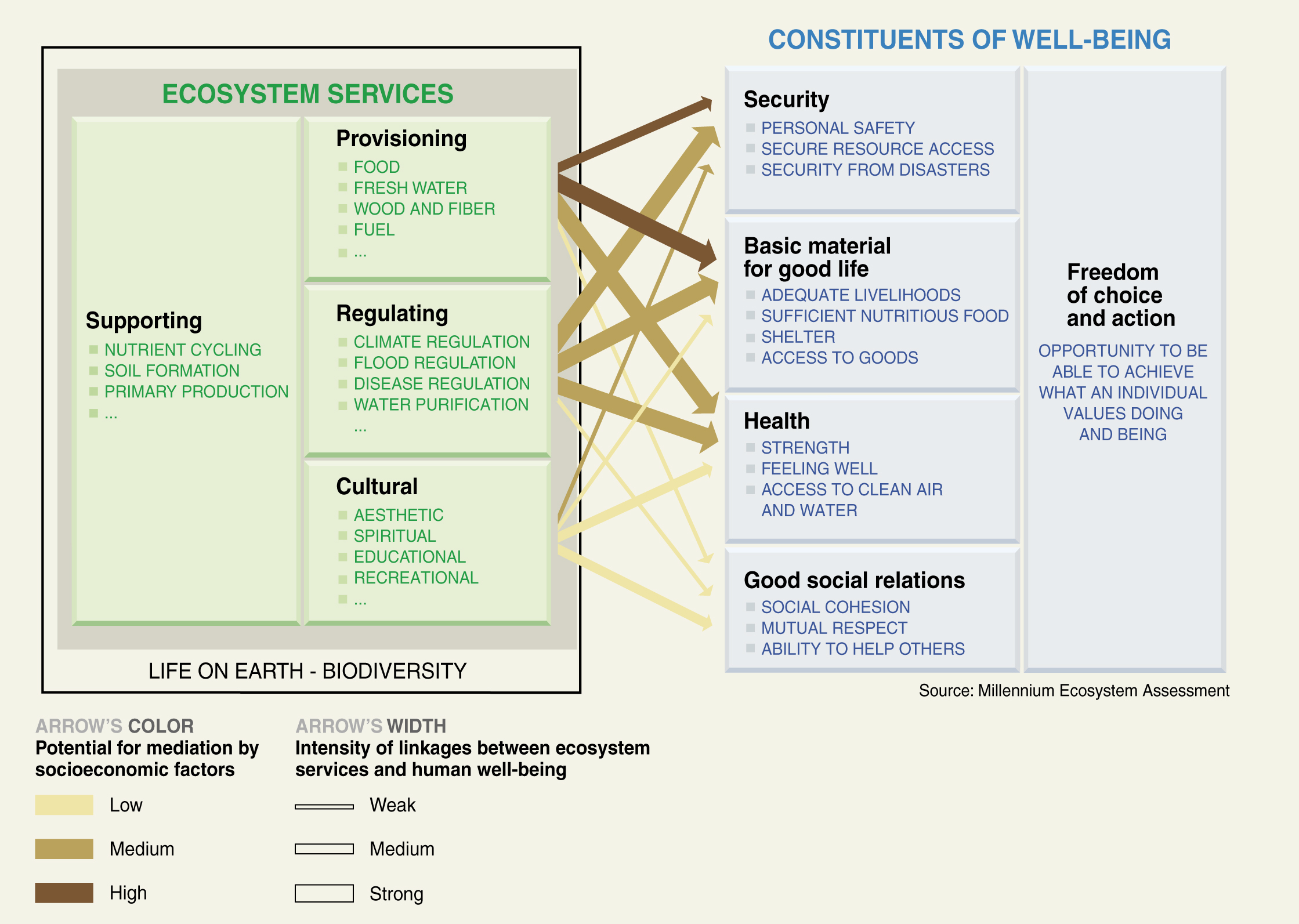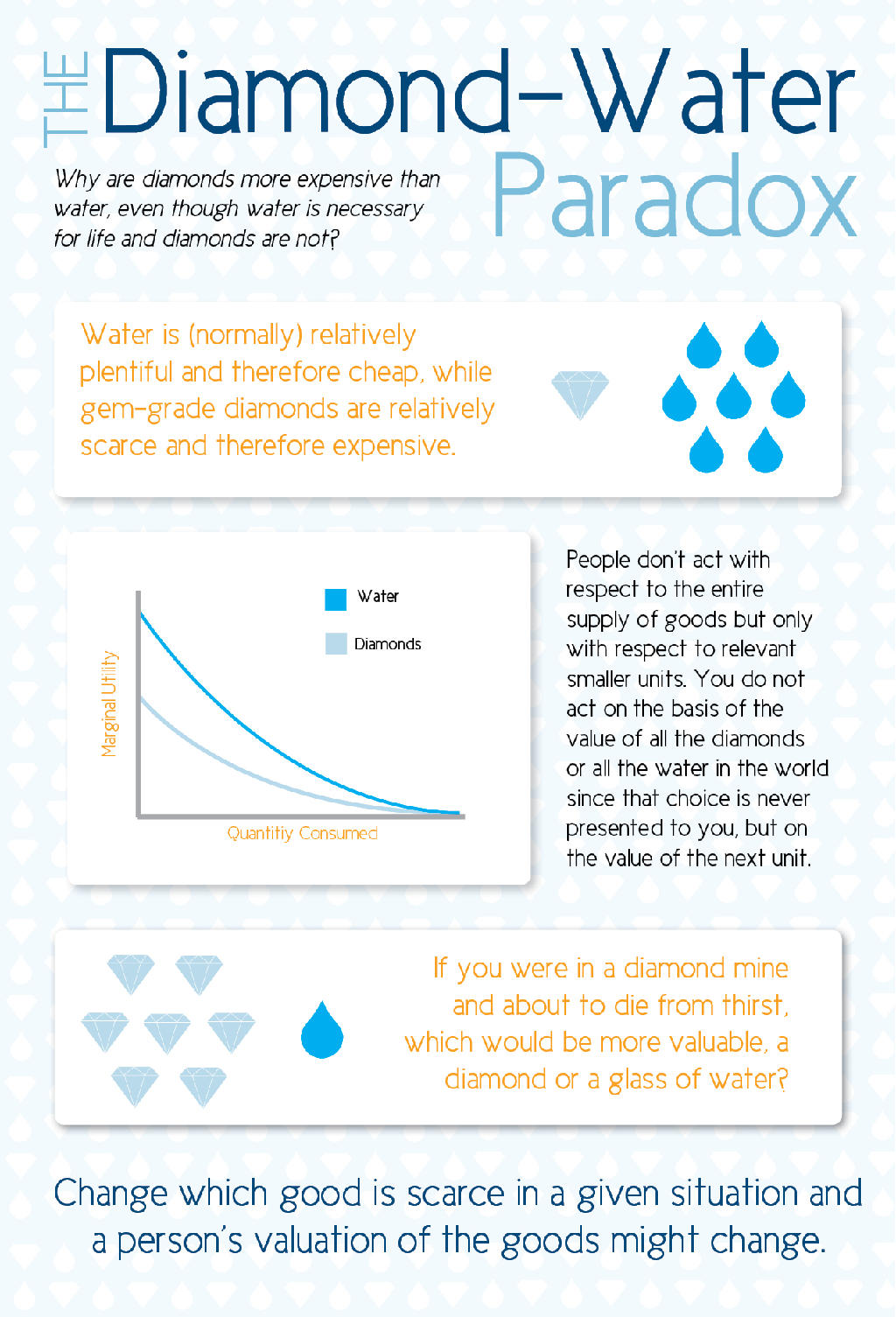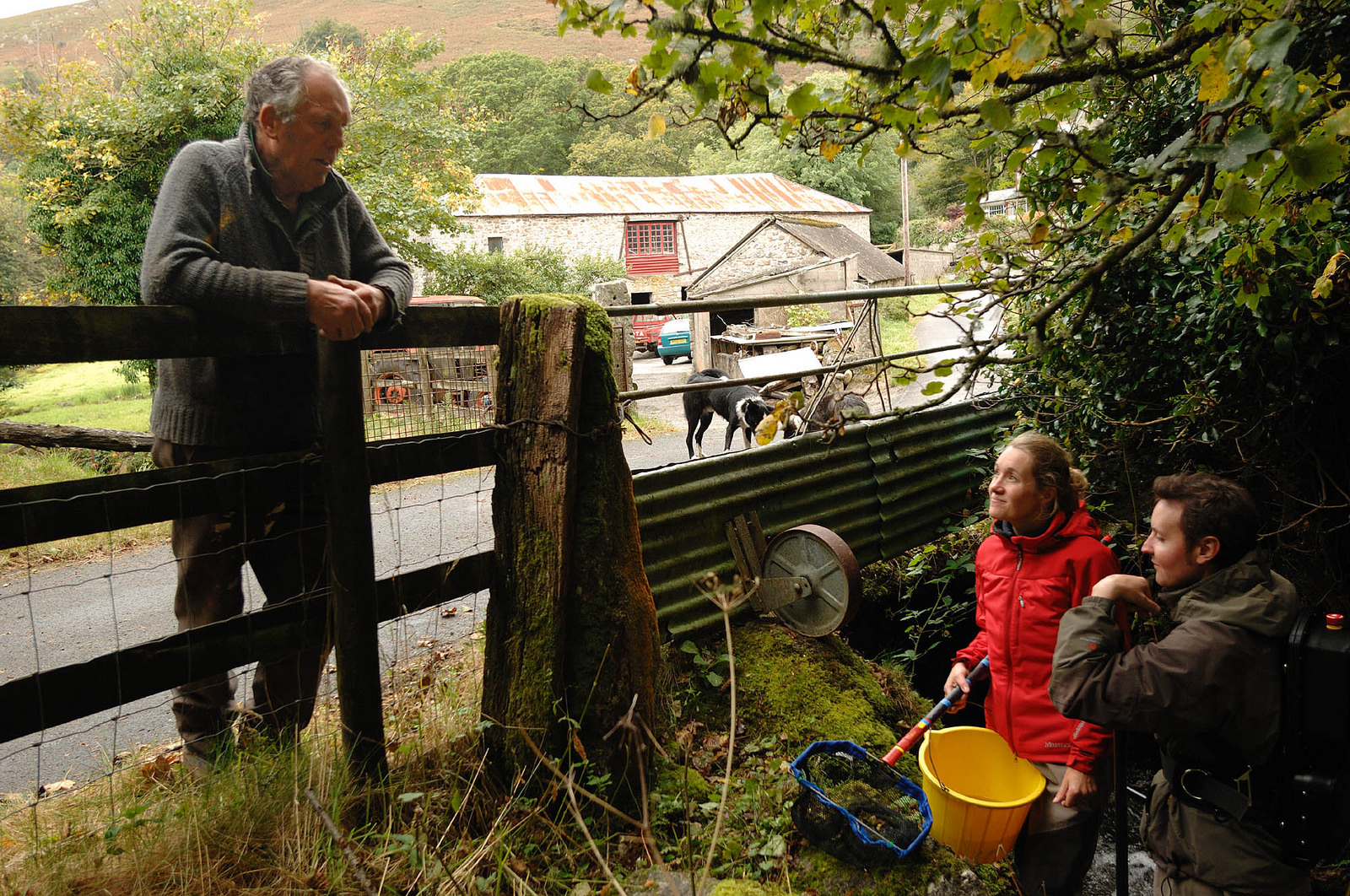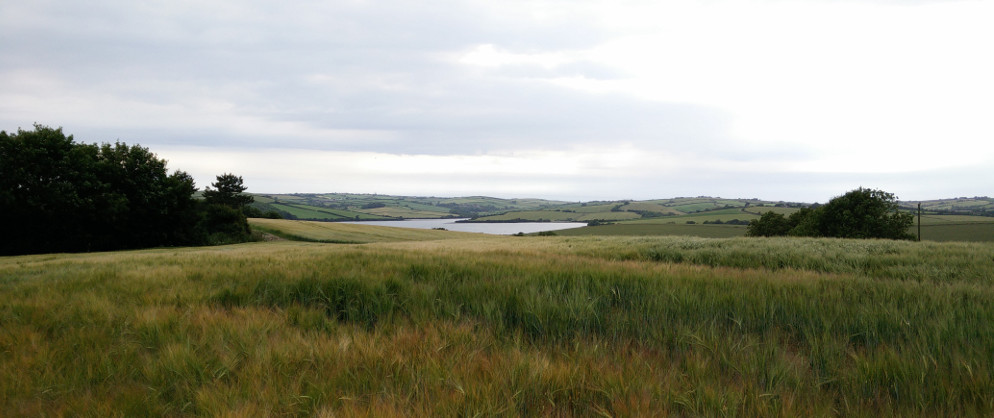Kathi Bauer, our resident ecosystem services expert, talks us through this innovative subject area.
 Lots of the work we do at WRT is focused on or at least related to understanding the ecosystem services that nature provides us with. “Ecosystem services” seems to be all the buzz in policy making and sustainability. You can find the term in business strategies, policy papers and scientific articles, in the social and natural sciences, with positive and negative comments. We are going to take a look at the history and context of the concept and controversies surrounding it. Starting out with the definition of ecosystem services, we then go into reasons for and problems brought up by different perceptions of it and its implementation. A term so widely used and employed in so many different contexts seems like a holy grail of multidisciplinarity – nearly too good to be true. So what are ecosystem services exactly?
Lots of the work we do at WRT is focused on or at least related to understanding the ecosystem services that nature provides us with. “Ecosystem services” seems to be all the buzz in policy making and sustainability. You can find the term in business strategies, policy papers and scientific articles, in the social and natural sciences, with positive and negative comments. We are going to take a look at the history and context of the concept and controversies surrounding it. Starting out with the definition of ecosystem services, we then go into reasons for and problems brought up by different perceptions of it and its implementation. A term so widely used and employed in so many different contexts seems like a holy grail of multidisciplinarity – nearly too good to be true. So what are ecosystem services exactly?
On The Origin Of The Term or The Survival Of The Broadest Definition.
Well, the truth is: there is no single commonly accepted definition of what ecosystem services actually means (1). After decades of research on the topic, the Millennium Ecosystem Assessment (MEA), a research project carried out by over 1300 scientists for the UNEP, defines them lightly as “benefits people obtain from ecosystems” (2). The idea is pretty simple: ecosystems can be seen as stocks of “natural capital”, providing a flow of ecosystem services that humans can harvest.
The much employed MEA framework (for an overview of this, see image on the right) then categorises the services according to their type into regulating, provisioning, supporting and cultural services. Cultural services describe benefits we gain on a spiritual or aesthetic level, like the feeling of being at home in a certain landscape, while supporting services are the ones that “keep the engine running”, like soil formation through different biotic and abiotic processes. Regulating services, as the name suggests, are benefits gained through the regulatory powers of ecosystems, like runoff retention of a forest that plays a part in flood regulation. Lastly, provisioning services are the ones that are most easily understood: we can mostly harvest them directly, like food or timber.

The Millennium Ecosystem Assessment framework of ecosystem services and how they contribute to human wellbeing.
While “ecosystem services” does not automatically equal “ecosystem services valuation”, or even monetary valuation, putting a monetary value on different aspects of an ecosystem is what is mostly understood when we talk about ecosystem services today (3). The idea behind defining and valuing ecosystem services in economic terms is that they represent a benefit to humans that is not represented in common markets, which is why they are not taken into account when making decisions based on economic valuation (3,4). Controversies or objections to this either regard a disagreement with the initial concept of ecosystem services itself or the belief that the concept should be implemented, but in a different way from what is happening now.
Let’s talk about this.

What does the Tamar mean to you? A campaign run in 2015 to capture the many ways people value their environment.
Initially coined in the 70s by conservation biologists to depict the benefits that humans gain from ecosystem processes in terms that would make their importance and costs of their degradation obvious – that is, economic terms and market metaphors – the term “ecosystem services” quickly gained attention (6,7). Finding a terminology that is meaningful to environmental scientists and ecologists as well as economists was seen as an important step in understanding each other (8). The problem is that our individual background shapes our beliefs and understandings, and though we may use the same words to talk about something, we might not be talking about the same things. Talking about nature in economic terms might tempt actors into thinking about it in economic frameworks (9). A consequence of this could be the perception that if nature has no monetary value, it has no value at all (10), and therefore can be destroyed without consequence. And fact is, not everything nature does is beneficial to us – sometimes quite the contrary – and it does not fit neatly into market cycles.
From appreciation to valuation.
Ecosystems are very complex and processes occurring in them and shaping their behaviour are still not fully understood even by ecologists. Rather than following linear trends, they are often subject to thresholds that, when passed, leave the system degraded. The many different components of an ecosystem interact in multiple ways and often have a feedback on each other. Services are the results of manifold functions that keep the ecosystem healthy. Functions exist with or without humans benefitting from them, but it is only this human element that turns them into ecosystem services.
In the late 90s, scientists put a number on the world’s ecosystems: they estimated the benefits gained by humanity through the use of ecosystem services to be annually $33 trillion, a number nearly double the amount of the global gross national product (GNP) at that time (4). The fact that they pointed out that economic valuation was only one method and the terminology employed only one way of looking at ecosystems, and that other approaches and tools should be developed and used in the future (11), did not prevent economic valuation from becoming one of the most prominent ideas in the debate around ecosystem services.
The idea of monetary appraisal of nature seems unethical to many. Nature is often believed to be something sacred, separated from our market systems and holding an intrinsic value that the limited monetary system employed by western societies simply cannot grasp. Monetary valuation of the different services allows us to compare benefits that would otherwise not be comparable – like the enjoyment we get out of walking along a river and its capacity for flood regulation. It enables the adaptation of market-based instruments – for example Payment for Ecosystem Services – to regulate ecosystem services, that is, the commodification of those. Defenders of the free market believe that this will be sufficient to regulate their use to a sustainable level.
Flaws in the plan.
Many stress that this is not a recommendable approach, especially as many ecosystem services resemble public goods (6,12), like clean air or scenic beauty of a landscape, that cannot be regulated properly by the free market. More so, classical economic tools are not tuned to recognise thresholds of ecosystems and so cannot prevent the crossing of these (7). Valuation often happens in terms of looking at marginal benefits – the benefit we gain out of a change in the provision of ecosystem services. Marginal benefits will be high when a resource is scarce, and low when it is abundant. The issue of this approach is demonstrated in the diamond – water paradox (see picture right) (13). Focusing on one mode of valuation, just like focusing on the goal of economic growth over others like social justice, reduces the complexities encountered when looking at ecosystem services. They are perceived and valued in different ways by different stakeholders. Not every benefit can be adequately captured in monetary terms or with economic methods (14,15), and a value calculated for a specific ecosystem in a specific context is not necessarily the same for the same ecosystem in a different context.

The Diamond-Water Paradox illustrates the issues faced by valuation.
This spatial element of valuation is especially important when looking at the provision of ecosystem services and payment schemes for those in developing countries. Ecosystems are not distributed equally across the globe, and who is entitled to them is not always answered easily. Often, it is the poorest who depend most on nature and are unable to resist its destruction while the rich can easily afford substitutes (13). With the right regulations and market mechanisms in place, economic valuation could potentially play an important role in poverty alleviation (16,17).
Ecosystem services are put on the market in the hope that economic benefits of their preservation might outweigh their degradation. In the short term however, economic benefits of an action harmful to the environment only too often outweigh the short term costs of environmental degradation. This, just like the idea of marginal values for life sustaining goods, is not only a market failure, it’s a failure in how humans perceive the world. Politicians as well as most economists tend to emphasise developments over the next few years rather than decades, and in the age of neoliberal economics the maximum individual welfare is a goal that does not need to take into account the welfare of future generations.
Changing the focus.
Debating whether or not we should value and include ecosystems in calculating trade-offs misses an important point: whether we put monetary value on ecosystem services or not, we already include them in our economic analysis and make choices based on trade-offs including ecosystems every day (5). The question is not so much if the concept of ecosystem services and their valuation is good, more thought should be put into the methods used and whether or not some services are seen as substitutable or not.

Working with different stakeholders and understanding their values is crucial to making the right decisions in ecosystem management.
To enable a socially just and sustainable use of ecosystems, decision-makers cannot let themselves be blinded by the simplicity the ecosystem services concept seems to suggest, nor by the belief that the free market will regulate itself adequately. Many ecosystem services cannot be efficiently integrated into the market and alternative solutions will have to be found to ensure sustainability in every respect.
In our work, we need to be aware of the challenges we face and we are constantly working with others in the field – be it farmers, anglers or academics – to make sure our understanding and use of ecosystem services has the positive impact we want it to have. The concept of ecosystem services is definitely an incredibly useful framework, and has changed the way we talk about our environment and the pressures it is under dramatically. While monetary valuation and the idea of capital is becoming increasingly more prominent, we need to make sure we not only focus on showing the economic importance of our natural capital and the services it provides, but also the many, many ways in which it enriches our daily lives that we can’t – and maybe don’t want to – express in pound values. And we need to make sure we and others remember the complexities we are faced with as well as the complexity of nature’s values. One of the most important things to us is to reconnect people to their local river, to give them back the enjoyment of this beautiful environment – and we’re quite certain that this cultural ecosystem service does not need a pound sign to be appreciated.
References.
1.Braat, L. C. & de Groot, R. The ecosystem services agenda:bridging the worlds of natural science and economics, conservation and development, and public and private policy. Ecosyst. Serv. 1, 4–15 (2012).
2.Millennium Ecosystem Assessment. Ecosystems and Human Well-Being. (2005).
3.Spash, C. L. How Much is that Ecosystem in the Window? The One with the Bio-diverse Trail. Environ. Values 17, 259–284 (2008).
4.Costanza, R. et al. The value of the world’s ecosystem services and natural capital. Nature 387, 253–260 (1997).
5.Kallis, G., Gómez-Baggethun, E. & Zografos, C. To value or not to value? That is not the question. Ecol. Econ. 94, 97–105 (2013).
6.Gómez-Baggethun, E., de Groot, R., Lomas, P. L. & Montes, C. The history of ecosystem services in economic theory and practice: From early notions to markets and payment schemes. Ecol. Econ. 69, 1209–1218 (2010).
7.Norgaard, R. B. Ecosystem services: From eye-opening metaphor to complexity blinder. Ecol. Econ. 69, 1219–1227 (2010).
8.Fisher, B., Turner, R. K. & Morling, P. Defining and classifying ecosystem services for decision making. Ecol. Econ. 68, 643–653 (2009).
9.Barnaud, C. & Antona, M. Deconstructing ecosystem services: Uncertainties and controversies around a socially constructed concept. Geoforum 56, 113–123 (2014).
10.McCauley, D. J. Selling out on nature. Nature 443, 27–8 (2006).
11.Costanza, R. et al. The value of ecosystem services: putting the issues in perspective. Ecol. Econ. 25, 67–72 (1998).
12.Peterson, M. J., Hall, D. M., Feldpausch-Parker, A. M. & Peterson, T. R. Obscuring ecosystem function with application of the ecosystem services concept. Conserv. Biol. 24, 113–9 (2010).
13.Farley, J. Ecosystem services: The economics debate. Ecosyst. Serv. 1, 40–49 (2012).
14.Wilson, M. A. & Howarth, R. B. Discourse-based valuation of ecosystem services: establishing fair outcomes through group deliberation. Ecol. Econ. 41, 431–443 (2002).
15.Lo, A. Y. & Spash, C. L. Deliberative monetary valuation: In search of a democratic and value plural approach to environmental policy. J. Econ. Surv. 27, 768–789 (2013).
16.Milder, J. C., Scherr, S. J. & Bracer, C. Trends and Future Potential of Payment for Ecosystem Alleviate Rural Poverty in Developing Countries. Ecol. Soc. 15, 4 (2010).
17.Kolinjivadi, V., Grant, A., Adamowski, J. & Kosoy, N. Juggling multiple dimensions in a complex socio-ecosystem: The issue of targeting in payments for ecosystem services. Geoforum 58, 1–13 (2015).

